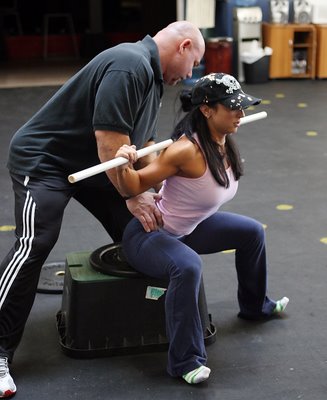"Rate of Force Development?"

People often ask me what “Rate of Force Development” (ROFD or sometimes RFD) means in terms of exercise science. Well, the boring and classic definition is:
A measure of the rate at which a force is developed. Rate of force development is measured in newtons per second or newton-metres per second.
Boring, right?
Here at Driveline Baseball, we emphasize ROFD training for our baseball athletes due to the high carryover it has into pitching velocity, bat speed, and overall strength gains. Here’s a brief excerpt of what EliteFTS had to say about it:
Rate of force development (ROFD) is probably the most important and under-recognized area of applied science pertaining to strength training and athletics. ROFD essentially refers to the speed at which force can be produced. Aside from those sports requiring very precise movements (such as gymnastics and ballet), I can’t think of a single example in athletics or lifting that wouldn’t benefit from a faster ROFD. A faster ROFD results in quicker, more explosive movements and gets the bar moving sooner.
Let’s take a look at an example. Let’s say two people (lifter A and lifter B) are attempting a 500-lb deadlift. Both are capable of producing 500 lbs of force, but lifter A has a significantly faster ROFD. It may take lifter A two seconds to produce enough force to get the bar moving off the floor and four seconds to lock it out at the top. Lifter B, with an inferior ROFD, takes four seconds to get the bar moving off the floor and six seconds to get it to his knees. He reaches failure before locking out at the top.
Louie Simmons (the creator of “Westside” training) emphasized “dynamic effort” training in all three of the traditional powerlifts – the squat, bench press, and deadlift. He advocated training not only for maximum strength (typically using 2-4 sets across of 4-6 reps at near-maximal weights), but also for power (ROFD) by increasing the sets, decreasing the reps, and increasing the speed at which the workout is done. For example, I currently have a 5-rep maximum (5RM) back squat of around 360 pounds. In a typical “volume” workout, I’ll do 3 sets of 5 reps at 360 pounds for a total of 15 reps in about 20-30 minutes depending on rest periods. An alternative to that volume workout could be 10 sets of 3 reps at 225 pounds – squatting to an 11″ box (below parallel) and exploding upwards after my butt makes contact to the box! Rest periods are kept to a minimum – perhaps 60 to 90 seconds between each set. This helps to develop power and ROFD which then carries over to heavy maximum strength lifting.
Hopefully this short blog post helps you to understand what Rate of Force Development is and how it can help you on the baseball diamond and in the weight room. And last, but not least, here’s an outstanding example of power and ROFD in my favorite weightlifter (Pyrros Dimas, Greece) in the 1996 Olympics where he won a gold medal:
Comment section